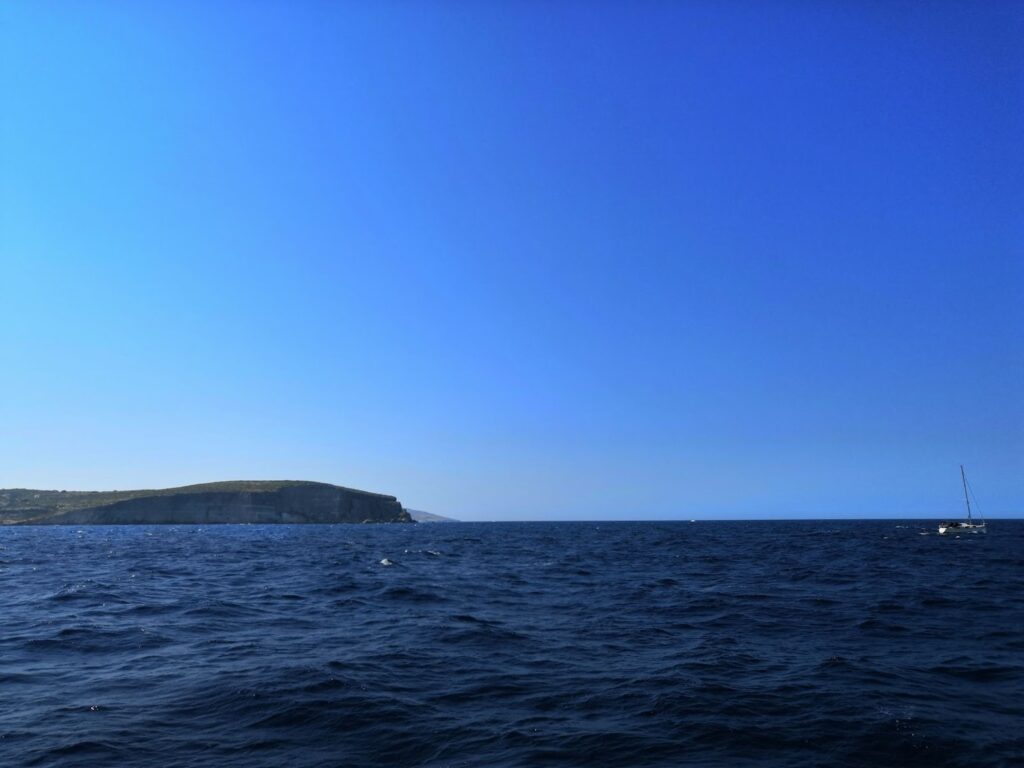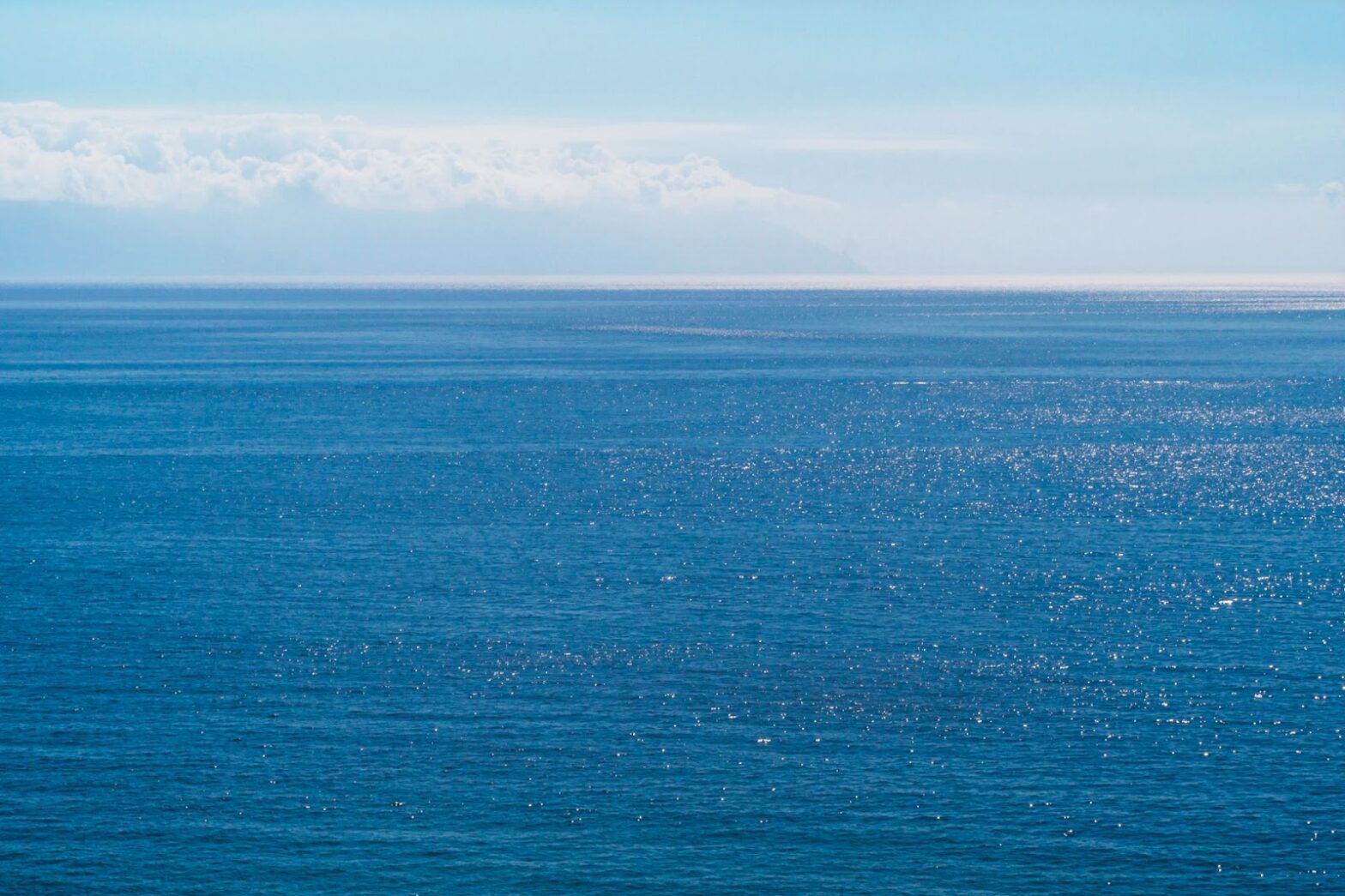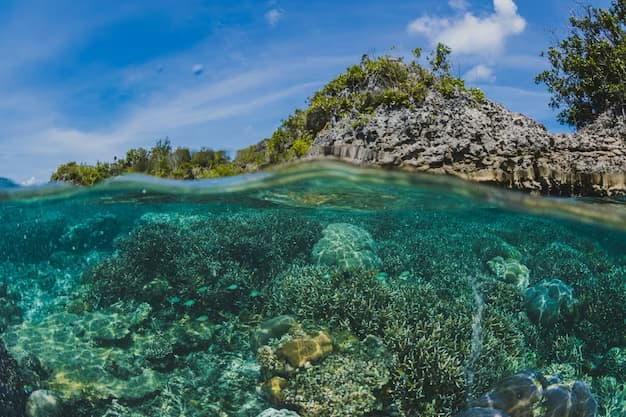Beneath the profound depths of the Earth’s oceans lies a realm of continual activity, where the planet pulsates with life. Known as oceanic ridges, or mid-ocean ridges, these enigmatic features are currently undergoing comprehensive examination through the utilization of deep-sea imaging technology and submersible vessels. Within these fissures of the Earth’s crust, a secretive world thrives in obscurity, sustaining its own ecosystems amidst the darkness, while simultaneously influencing the majestic movement of tectonic plates. The volcanic eruptions along these ridges give rise to what is essentially the planet’s largest mountain range, concealed beneath the unfathomable depths of the oceans.
The Birth of New Seafloor: The Enigma of Mid-Ocean Ridges
A mid-ocean ridge isn’t just a geological feature; it’s a dynamic, active environment where the very foundation of our planet is constantly being renewed. Essentially, a mid-ocean ridge is a gargantuan submarine mountain range, created by the continuous upwelling of molten rock, known as magma, from beneath the earth’s crust.
Before delving into the concept of mid-ocean ridges, a clear understanding of plate tectonics is necessary. Plate tectonics is the theory explaining the structure of the earth’s crust and many associated phenomena.
Our planet’s uppermost layer, the lithosphere, is not one solid piece but rather a jigsaw puzzle of large pieces known as tectonic plates. These plates float atop the semi-fluid layer of the mantle, which, due to its molten magma content, is perpetually in flux. This constant motion forces the tectonic plates to shift and move like rafts on an undulating river.
There are certain areas where these plates collide, causing one plate to plunge under another, creating what is referred to as a subduction zone. However, there are also regions where plates are moving apart, and these are the areas where mid-ocean ridges come into existence.
Unseen Wonders Beneath the Waves: The Secrets of Seafloor Creation
While the continents we inhabit are made up of massive slabs of thick crustal rock, the majority of the Earth’s surface is, in fact, seafloor. As the tectonic plates journey apart, spaces are left in their wake, and it’s in these gaps that new crust forms. It’s in these regions, on these towering underwater ridges, that the seafloor extends and grows.
The mid-ocean ridges are responsible for this seafloor genesis, like seams on a terrestrial baseball. This impressive system stretches over 40,000 miles or 65,000 kilometers across the world’s oceans.
However, the majority of this system remains hidden under vast expanses of ocean water. On average, these ridges tower from an awe-inspiring 8,200 feet (2,500 meters) beneath the surface of the ocean. Therefore, studying these submerged geological marvels provides unique insights into the underpinnings of our planet’s geology.
From this vantage point, we see that mid-ocean ridges are much more than mere features on the ocean floor. They represent a dramatic display of Earth’s internal processes, illustrating the continuous creation, destruction, and recreation the planet undergoes. As such, they provide scientists with a tangible window into the dynamic geological processes that shape our world.
Unveiling the Submarine Architecture: A Closer Look at the Cross-section of Mid-Ocean Ridges
Imagine a pair of colossal mountain ranges, stretching on for thousands of miles, parted by a canyon of significant depth – this is roughly how a mid-ocean ridge looks like in cross-section. This central low-lying area, often referred to as a rift or trench, is an integral part of the ridge system. These rifts are the conduits that allow molten rock from the earth’s mantle to reach the seafloor.
The story doesn’t just end with a rift opening; what happens next is equally fascinating. The magma, once it breaches the surface through these rifts, accumulates over time to form towering submarine mountains. Some of these underwater peaks are so astonishingly high that they’d easily dwarf many of the earth’s terrestrial mountain ranges.
Probably the most well-known of these deep oceanic trenches is the Mariana Trench, holding the title as the planet’s deepest point.
Growth and Spread Patterns of Mid-Ocean Ridges: A Tale of Diversity
Interestingly, although each mid-ocean ridge contributes to the creation of new seafloor, they don’t all grow at the same pace. The expansion rate varies significantly, with some increasing by a modest few centimeters every year, while others can generate up to 20 centimeters (about eight inches) of fresh seafloor annually.
The speed of growth of these ridges influences their physical characteristics. Slow-spreading ridges typically have steeper inclines – the slowly extruded magma has ample time to cool and solidify, forming a rigid structure. On the other hand, fast-spreading ridges typically have wider and sloping sides as the rapidly produced magma flows outwards before it has a chance to fully solidify.
Ecosystems of the Deep: A Hidden Biodiversity Haven
Despite the inhospitable conditions, both slow and fast-spreading ridges are teeming with life, housing a myriad of unique and highly adapted species. Over 17,500 species have been identified to date, but the actual number is believed to be far greater. These ecosystems are not just of interest to marine biologists but also to astrobiologists as they provide insights into how life could potentially thrive in extraterrestrial environments.
All Oceans House a Mid-Ocean Ridge: Undersea Exploration Challenges
Every ocean on Earth harbors a mid-ocean ridge. These underwater mountain systems typically trace the central avenues of the oceans. As these ridges grow by the constant supply of molten basalt from beneath the Earth’s crust, the lava solidifies and spreads in a near-symmetrical manner to both flanks of the ridge.
Despite their global prevalence and immense geological importance, mid-ocean ridges largely remain enigmatic due to the immense difficulties associated with exploring these deep-sea environments. The extreme depths, pressure, and inaccessibility of these regions present formidable challenges to researchers. This has resulted in only about 0.1% of the total mid-ocean ridge system being directly surveyed or explored.
However, with the advent of advanced sonar technologies and satellite imaging, scientists have been able to considerably improve the precision with which these mid-ocean ridges are mapped. This indirect method of exploration offers valuable insights into these mysterious underwater architectures.
Spotlight on the Mid-Atlantic Ridge: A Slow-Growing Giant
Among all the mid-ocean ridges, the Mid-Atlantic Ridge holds a special place because of its accessibility and extensive study. This ridge rises approximately one to one-and-a-half miles above the seafloor, giving it a somewhat more approachable altitude for exploration.
This slow-spreading ridge generates about two inches of new seafloor each year. Its vast geographical stretch, extending from just south of the arctic region near Greenland all the way down to the vicinity of Antarctica, makes it one of the planet’s largest geological features. This magnificent ridge would be conspicuously visible from outer space if it weren’t veiled by the ocean waters.
Given its slow growth pace, the Mid-Atlantic Ridge boasts a wide and prominent rift valley. This divergence contributes to its unique geological features and serves as a fertile field of study for Earth scientists. Mainly, these slower-growing mid-ocean ridges provide a window into the processes of seafloor spreading and the dynamics of tectonic plate movements.
The East Pacific Rise: A Fast-Growing Underwater Marvel
In sharp contrast to the slow-paced Mid-Atlantic Ridge, the East Pacific Rise is a rapidly expanding mid-ocean ridge. With an impressive spreading rate of approximately six inches per year, it serves as a dynamic illustration of the planet’s active geological processes.

The East Pacific Rise does not possess a marked rift valley like its slower-growing counterparts. Instead, the region displays an intricate chain of volcanic summits that meander their way along the central Pacific Ocean. This lack of a rift valley is a direct result of its rapid growth rate, which doesn’t allow time for the molten magma to cool and solidify before being pushed away by newer magma.
Unique to the East Pacific Rise, this underwater mountain range comes significantly closer to the continental coastline, particularly along North America. This closeness has led to the formation of the Gulf of California, one of the few places where underwater geological features are visible on the surface.
The Central Indian Ridge: A Gentle Giant
The Central Indian Ridge, located beneath the Red Sea, steadily expands at a slow pace. This ridge extends southeastward beyond India’s southern tip and connects with the Southeast Indian and Southwest Indian Ridges.
Despite its slow growth rate, averaging only a few centimeters per year, it dramatically influences the surrounding topography. The Central Indian Ridge serves as a prime example of how continuous, albeit slow, geological activities can remold the face of our planet over long timescales.
The Intricate Network of Mid-Ocean Ridges: A Geological Masterpiece
The U.S. Geological Survey’s map of mid-ocean ridges illustrates the intricate network of these fascinating underwater mountain chains. These main ridges often sprout smaller branches and sub-ridges, creating a complex web of geological formations.
Some sections of these ridges form volcanic hotspots, where the volcanic activity is significantly higher. If these hotspots persist long enough, they occasionally lead to the formation of islands through the cumulative buildup of new basaltic crust.
A notable example of this phenomenon are the Galapagos Islands. These islands are part of a slow-growing mid-ocean ridge, continuously emerging from the seafloor. Nowadays, the Galapagos Islands are a captivating study site, attracting biologists and geologists worldwide to investigate its unique biodiversity and geological features.
Astonishing Insights About Mid-Ocean Ridges
Unfathomably deep, the Mariana Trench’s Challenger Deep region stands as the deepest point in the world’s oceans. Picture this: if the world’s tallest mountain, Mount Everest, was submersed in this trench, there would still be over a mile of water covering its peak. This fact provides a glimpse into the sheer enormity and depth of these underwater features.
Mid-ocean ridges play a vital role in our planet’s seismic and volcanic activity. Notably, their formation and evolution are intrinsically linked to the renowned Ring of Fire. This vast belt around the Pacific Ocean houses a whopping 75% of Earth’s active volcanoes and is a hotbed for seismic events, responsible for 90% of the planet’s earthquakes. The link between these phenomena is the subduction zones along the Ring of Fire, where the newly formed basalt from the Pacific Ocean floor is forced beneath the continental crust, leading to a resurgence of volcanic activity on land.
From an exploration perspective, it’s surprising to learn that we have scrutinized more of our solar system’s celestial objects like Mars and the Moon’s far side than the worldwide mid-ocean ridge system. This statement, made by researchers at the National Oceanic and Atmospheric Administration (NOAA), underscores the technical challenges and enormity of exploring these underwater geological marvels.
The first detailed surveys of these hidden underwater structures began in the 1950s. Pioneering this effort was a ship named Vema, which noticed intriguing patterns in their sonar readings. It indicated the presence of a ridge-like structure extending down the middle of the Atlantic Ocean that mirrored the adjacent continents’ coastlines.
The expanse of the interconnected mid-ocean ridges is awe-inspiring. As per estimates, if these ridges were unwound and laid straight, they would envelop the Moon six times over. This vast system comprises over 40,000 miles of continuous volcanic mountains that snake beneath the world’s oceans.
Lastly, to visualize the enormous scale of these mid-ocean ridges, picture the Mid-Atlantic Ridge’s rift valley. This trench running along the ridge’s center mirrors the size and depth of the iconic Grand Canyon. But unlike the Grand Canyon, it extends almost uninterrupted for thousands of miles beneath the Atlantic Ocean, encapsulating the true grandeur of these underwater geological wonders.
Conclusion
In conclusion, the exploration of oceanic ridges unveils a captivating realm of geological marvels and hidden ecosystems, where the Earth’s dynamic processes shape the landscape and influence the intricate balance of life beneath the waves. As technology advances, our understanding of these enigmatic features deepens, offering insights into the fundamental forces that drive our planet’s evolution. The study of oceanic ridges not only expands our knowledge of Earth’s geology but also underscores the profound interconnectedness of the natural world, emphasizing the importance of continued exploration and conservation efforts in these remote and mysterious regions of the deep oceans.



